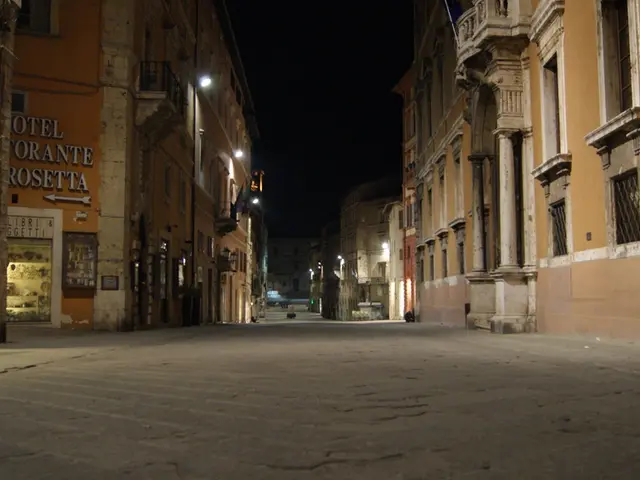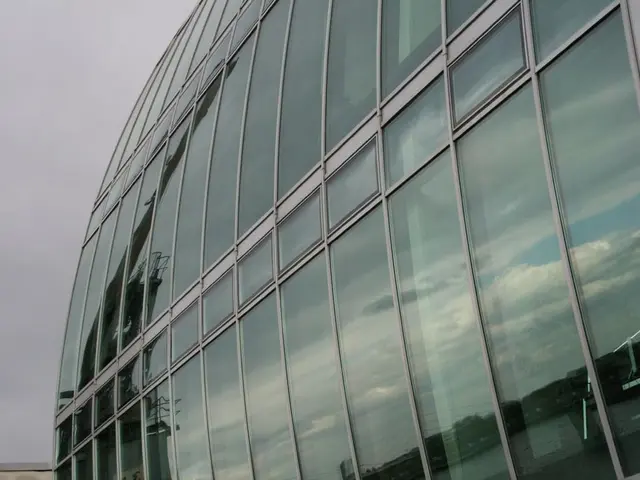Alternative Energy: Harnessing Power from Unconventional Resources
Energy Scramble: Germany's Desperate Quest for LNG & Independence from Russian Gas
Europe's reliance on Russia for energy is a ticking time bomb! With the ongoing energy crisis, the EU must reorganize its energy sources to steer clear of the political whims of Moscow. Let's dive into the heart of Germany's energy predicament and the solutions on the table for weaning off its dependence on Russian gas.
The German Conundrum
Germany's three nuclear power plants – Emsland, Neckarwestheim 2, and Isar 2 – provide paltry six percent of the country's electricity. Meanwhile, gas-fired power plants account for 13 percent. Nevertheless, the real Achilles' heel lies in the vast quantities of natural gas used for heating buildings and industrial production.
As of late July, Germany's gas storage facilities are 66.8 percent full, with a potential to reach 90 percent by November 1st. However, speculations swirl about whether this fill level would be sufficient to endure the winter chill. To secure a positive outcome, it's crucial that Russia delivers at least 20 percent of the originally agreed quantities. But, Russia's track record suggests President Vladimir Putin could use gas supplies as a political weapon again, casting a shadow of concern.
A French Twist
Predictably, no country has been as dependent on Russian pipeline gas as Germany. Last year, half of the total gas imports came from Russia, with the EU importing 45 percent. However, the French utilities sector presents a peculiar scenario. France houses 56 nuclear power plants that produce a staggering 70 percent of the electricity needed. Frequently, Germany has imported French nuclear power. Yet, the Russian gas throttling has been compounded by the fact that the nuclear reactors in France are only running at half capacity due to maintenance, inspections, and small cracks in the pipework of the emergency cooling systems.
Enter LNG – The Savior or Just a Band-Aid?
In the midst of this upheaval, liquefied natural gas (LNG) is gaining traction as a stopgap in the European energy mix. LNG is cooled down to minus 162 degrees, liquefied, and then transported by special LNG tankers. The largest quantities of LNG are being hailed as a quick fix to Germany's energy conundrum. However, questions remain about whether Germany has the necessary infrastructure to process and distribute LNG.
Expand Forward on Several Fronts
Germany is already building terminals for unloading liquefied natural gas in Wilhelmshaven and Brunsbüttel. Discussions around additional terminals in Stade and Rostock are underway. Moreover, there are LNG tankers with regasification plants on board, some of which Germany has secured for ten years. Two of these ships will dock in Wilhelmshaven and Brunsbüttel, where they will be used as floating LNG terminals for unloading gas supplies. In an ideal scenario, LNG could also be discharged at terminals in the Dutch port of Gate and the Belgian port of Zeebrugge, then flow through the existing pipeline system to Germany. France, traditionally a recipient of Russian gas, has offered assistance, boasting four LNG terminals already in place.
Bagyong LNG – Strategies to Ramp Up
- Diversify LNG Import Capabilities: Expanding LNG import terminals, storage capacity, and investing in FSRUs will provide Germany with the necessary infrastructure to import and efficiently process larger volumes of LNG.
- Secure Global LNG Supplies: Engage in robust partnerships with major LNG-producing nations like the United States, Qatar, and Australia to ensure consistent supplies. Cozy up to newer producers as well to diversify the supply chain.
- Invest in Flexible Infrastructure: Use Floating Storage and Regasification Units (FSRUs) to handle LNG swiftly compared to traditional onshore terminals.
- Market Diversification and Pricing: Adopt strategies to mitigate the impact of volatile LNG prices. Foster an investment-friendly environment to encourage LNG infrastructure development.
- Support EU-Wide Energy Security Measures: Align with EU partners on a unified strategy to reduce Russian gas dependence. The EU's aim to eliminate Russian gas imports by 2030 echoes Germany's aspirations.
With these steps, Germany stands a good chance of rapidly increasing its LNG imports, thereby reducing reliance on Russian natural gas and enhancing its energy security. Remember, this battle isn't just Germany's fight – it's a European concern. So, let's hunker down and strategize together to emerging victorious in the race for energy independence.
- To endure the winter, Germany needs Russia to deliver at least 20 percent of the agreed gas quantities, but concerns persist as President Putin may use gas supplies as a political weapon again.
- France, with 56 nuclear power plants producing 70 percent of its electricity, has offered assistance in the form of its four LNG terminals and potential LNG imports.
- As Germany increases its LNG imports, it is investing in infrastructure like terminals in Wilhelmshaven, Brunsbüttel, Stade, and Rostock, as well as securing LNG tankers with regasification plants for ten years.
- In addition, discussions are underway for docking LNG tankers in Zeebrugge, Belgium, and gate, Netherlands, before transporting the gas to Germany through existing pipeline systems, as part of a wider strategy to reduce European dependence on Russian gas.








